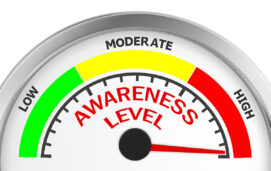When you’re at a nonprofit, there’s a joyous connection that happens when you feel like donors really “get” your organization and what you’re doing.
You feel seen. You feel affirmed.
And here’s the thing: there’s also a joyous connection for a donor when they feel like an organization really “gets” them.
Does your organization’s fundraising make your donors feel like you really “get” them?
***
When you’re in a personal relationship with a donor, it’s not that hard to make a donor feel like you really “get” them. You can ask them questions about their story and about why they donate. You can create a fundraising ask or offer just for them that shows them you understand what they care about and why they give.
It’s harder to do in a piece of direct mail that goes to all donors who have given a gift in the last 18 months. It’s harder still in an email that goes to everyone.
But it’s possible.
Here’s How
In prominent locations in your fundraising, include sentences that attribute to the reader what you know about people who are likely to donate.
Here are some examples:
- In an appeal – “I know you care about classical music.”
- In an automated Thank You email – “You just saw a situation that touched your heart and you did something about it. Thank you!”
- In a newsletter – “You know that someone in Gary’s situation is in real danger, and that’s why I’m so excited to tell you what your generosity helped make possible for him.”
You get the idea.
And you also see that this isn’t just the “window dressing” of including the word “you” a lot. It’s actively thinking about what donors care about. It’s thinking through a donor’s personal experience with your cause and/or beneficiaries. It’s thinking through the emotions a donor experiences as they give a gift. And then, on behalf of your beneficiaries, mirroring those thoughts and experiences back to donors.
It’s not a magic bullet. And there are tons of other things you have to do well to succeed.
But when your fundraising consistently includes these little hints that you understand your reader, you create a two-way connection.
That’s more powerful than the one-way connection donors are used to. It’s similar to moving from “like” to “love.”
So put yourself in the following situation: it’s right before dinner. Your donor is quickly processing their mail. They have two envelopes in front of them, but only have time to open one. Your donor must make a quick, subconscious decision.
Which letter do you think the donor is more likely to open? The one from “one of those organizations that I like” … or the letter from “that one organization that gets me”?
Steven Screen is Co-Founder of The Better Fundraising Company and lead author of its blog. With over 30 years' fundraising experience, he gets energized by helping organizations understand how they can raise more money. He’s a second-generation fundraiser, a past winner of the Direct Mail Package of the Year, and data-driven.








